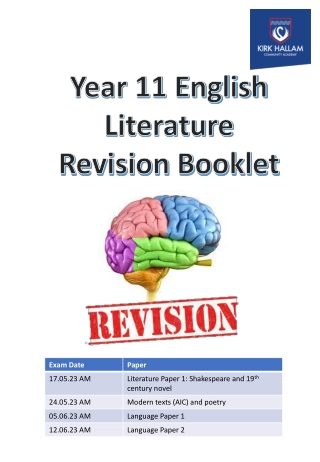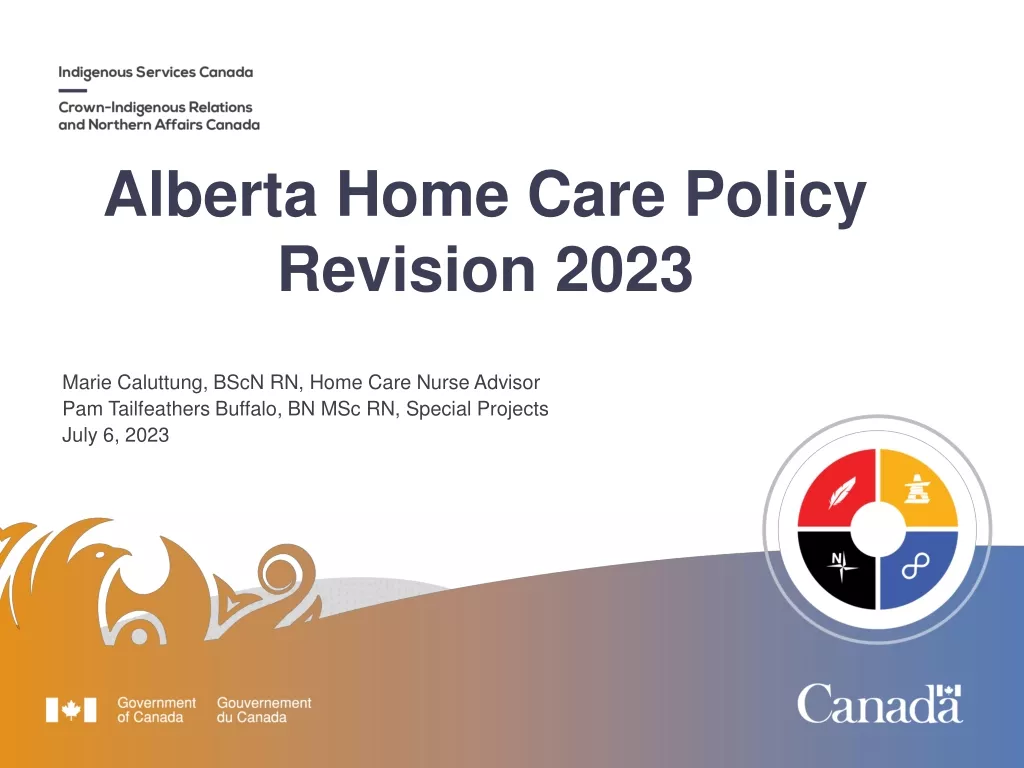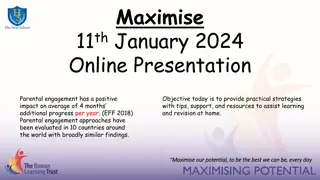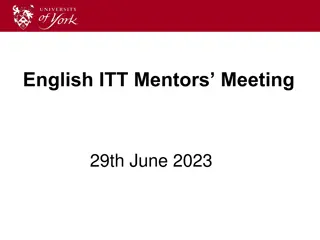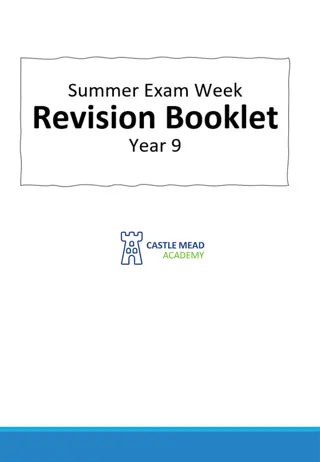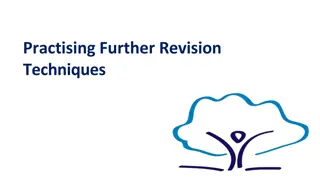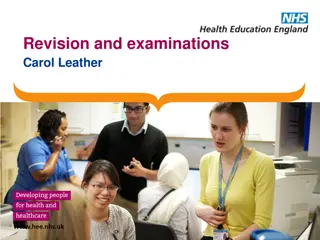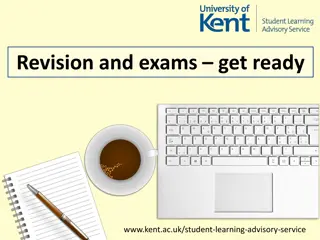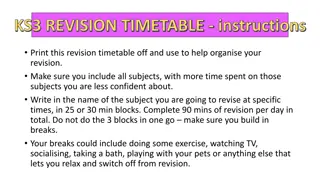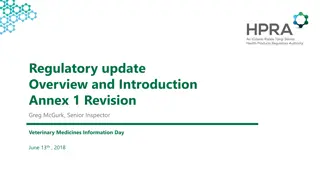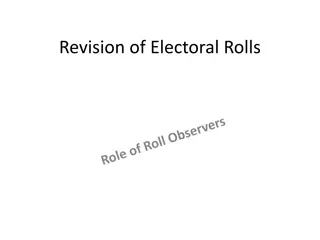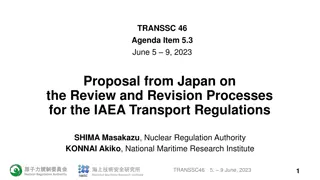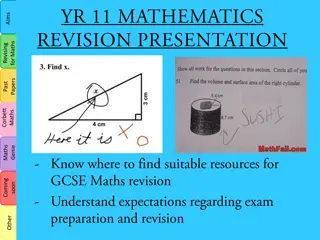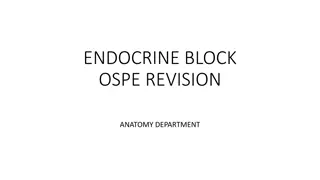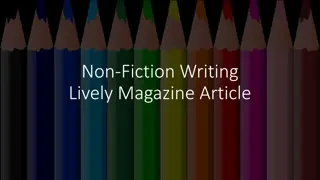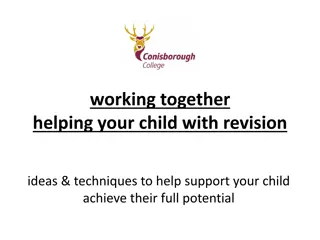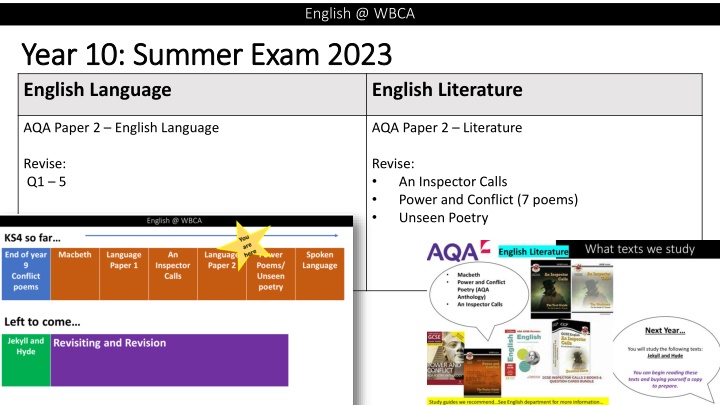
Effective English Literature Study Techniques for Year 10 Students
Enhance your English literature study skills with techniques like analyzing key quotes, understanding context, and leveraging exam questions. Access online resources and videos to aid your learning journey.
Download Presentation

Please find below an Image/Link to download the presentation.
The content on the website is provided AS IS for your information and personal use only. It may not be sold, licensed, or shared on other websites without obtaining consent from the author. If you encounter any issues during the download, it is possible that the publisher has removed the file from their server.
You are allowed to download the files provided on this website for personal or commercial use, subject to the condition that they are used lawfully. All files are the property of their respective owners.
The content on the website is provided AS IS for your information and personal use only. It may not be sold, licensed, or shared on other websites without obtaining consent from the author.
E N D
Presentation Transcript
English @ WBCA Year 10: Summer Exam 2023 Year 10: Summer Exam 2023 English Language English Literature AQA Paper 2 English Language AQA Paper 2 Literature Revise: Q1 5 Revise: An Inspector Calls Power and Conflict (7 poems) Unseen Poetry
English @ WBCA 1. Write a key quote in the middle English literature is about learning quotes for the plays, poems and novels we have studied and being able to analyse effectively 2. In the top left corner make a note of where this is said e.g in the opening of act 1 or in act 3, scene 4 or in the final moments 3. In one colour write the denotations of the quote what does it mean? 4. In a different colour extend your thoughts by explaining how it links to the context or what else is brought to mind 5. In the top right add a box for exam questions when this quote could be used 6. For the bottom right, explain how this quote has been used for structural significance e.g. it is used to emphasise the change in atmosphere to signify a stark awakening when the inspector arrives Make your own flashcards
English @ WBCA Online Learning Resources Online Learning Resources www.century.tech - Complete activities based on GCSE courses www.senecalearning.com/en-GB/ Complete activities and quizzes based on GCSE courses www.DigitalTheatre+.com watch the plays we have studied. Access critical essays and other performance materials www.openculture.com watch and listen to anything from audiobooks, documentaries and speeches. www.vocabulary.com/lists - you can use this website to practise vocabulary YouTube English specialists 1. Mr Bruff 2. Mr EverythingEnglish 3. Mr Salles
PAPER 2- READING True or False AO1 Write a summary of .AO1 How does the writer use language to AO2 Compare how the two writers convey their different attitudes to AO3 1. 2. 3. 4. Terminology: simile, metaphor, personification, hyperbole, power of three, imagery, repetition, emotive language, oxymoron, sibilance, alliteration, juxtaposition, simple, complex, compound, verb, noun, adjective, adverb, pronoun, onomatopoeia, pathetic fallacy, anaphora, rhetorical question, anecdote, direct address, emotive language, polysyndeton, facts, statistics, epizeuxis, exclamation, epistrophe, declarative sentence, imperative sentence, interrogative sentence. Question 2 1. 2. 3. In Source A whereas in Source B .. In Source A, the writer describes (insert quotation) This suggests that .(make an inference). However, in Source B, the writer describes . (insert quotation) This suggests that (make an inference). Read the question and highlight the focus; this is VERY IMPORTANT. Re-read the extract and highlight relevant quotations from both texts. Write your response using the following structure: idea, evidence, inference. Question 3 1. 2. Read the question and highlight the key words/focus. Put a box around the given section, re-read it and highlight 3/4 key quotations thinking about: powerful words and phrases, and/or language features, and techniques and/or sentence forms. Write your response using the following structure: terminology, quote, effect, development/close analysis. The writer uses (insert subject terminology) in the line/phrase/sentence/word .(insert quotation). This makes the reader think/feel/ imagine OR This suggests to the reader that .. The verb/noun/adjective/adverb has connotations of OR The reader might associate with this phrase through the use of the noun/adjective/verb/adverb . 3. Question 4 1. 2. Read the question and highlight the key words/focus. Work through both extracts highlighting any relevant evidence that related to the question. Think about summarisingthe writer s attitude/perspective in one/two quotations. Show an understanding of attitudes in both texts by writing an overview, give evidence, make an inference, talk about methods, bring in the second source and repeat. The writer of Source A uses a tone to suggest that he/she thinks/feels/has the view that On the other hand, the writer of Source B uses a . tone to suggest that he/she thinks/feels/has the view that 3. In Source A, the writer says that, (insert quotation). This reveals he/she thinks/feels/has the view that (explain). The use of (insert method) suggests/emphasises/implies (discuss effect). Whereas, in Source B, (repeat steps above). Comparative Connectives: whereas, on the other hand, in contrast, whilst, however.
PAPER 2- WRITING Response to a statement relating to the extracts you have read. Explain/instruct/advise/argue/persuade Steps to success: Planning: 3 rich ideas relating to the given statement. Matching form 5 paragraphs: introduction, idea 1, idea 2, idea 3, conclusion. Devices Anaphora: deliberate repetition of the opening of a sentence: All the people were moving in the same direction; all the people were thinking the same thing; all the people were discussion the same topic. Epistrophe: deliberate repetition of the end of a sentence: Where now? Who now? When now . Power of three: Using the pattern of three in your writing. Emotive Language: encouraging the reader to feel a particular emotion. Rhetorical Question: A question that does not require and answer. Direct Address: Addressing the audience directly using pronouns such as: you, we and us. Anecdote: a short story that illustrates a point that you are trying to make. Polysyndaton: repetition of a conjunction in a list: it was a long and laborious and tiring journey. Facts and Statistics Epizeuxis: repetition of words in succession within the same sentence: The horror, the horror. Imperative Command: Giving a command to the reader. Donate now. Full Stop (.) at the end of each sentence. Capital letters at the beginning of a sentence and for all proper nouns. Comma (,) used to separate a list, before direct speech, before co-ordinating conjunctions, after a subordinate clause, after an adverbial start, to mark embedded clauses. Semi-colon(;) used to show a relationship between two independent clauses and follows a conjunctive adverb. Colon (:) indicates that what comes after it is an illustration of what has come before it. Brackets () and Dashes (-) enclose additional information. Letter: Use of addresses, date, formal mode of address, introduction, 3 ideas, conclusion, appropriate sign off. Article: original headline, strapline, introduction, 3 ideas, conclusion. Text for a Leaflet: title, subheadings, introduction, 3 ideas, conclusion. Speech: addressed to an audience, introduction, 3 ideas, conclusion, clear sign off. Essay: introduction, 3 clear ideas, conclusion. Simple Sentence: One independent clause. Compound Sentence: Two independent clauses joined with a conjunction or semi-colon. Complex Sentence: One independent clause with a subordinate clause. Discourse markers: regardless of the fact, accordingly, as a matter of fact, thus, although, further, moreover, assuming that, in spite of the fact, in contrast, as a result of, consequently, therefore, additionally, however, additionally, on the contrary.

